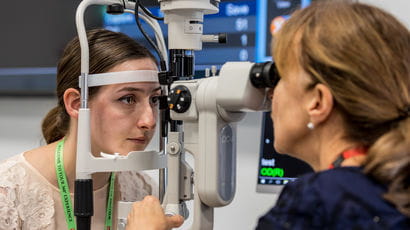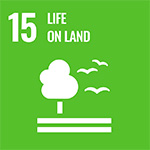Reassessing the environmental effects of radioactivity
New methods for predicting uptake of radioactivity by plants are transforming how the environmental impact of nuclear activity is managed.
The studies led by UWE Bristol’s Professor Neil Willey are the first of their kind to use classification systems for predicting transfer. Compared to standard approaches, this provides greater accuracy in modelling the long-term effects of radionuclides on soils, crops and flora.
Traditionally, national and international regulators have relied on concentration ratios (CRs) to predict the transfer and effects of radionuclides, which are atoms that have excess nuclear energy, when approving new nuclear stations or examining the operation of existing sites.

Reducing uncertainty
CRs contain a level of uncertainty that limited their applicability to thousands of plant species before UWE Bristol’s research. Professor Willey’s work helped to reduce this uncertainty and showed that authorised releases of radioactivity do not present long-term risks to food chains.
The Environment Agency (EA) described the research as “game changing”, in how it is helping improve the regulation of the UK’s multi-billion-pound nuclear programme. It has been particularly instrumental to the work of Radioactive Waste Management Ltd (RWM), which is responsible for geological disposal of the UK’s nuclear waste.
Learnings from Chernobyl
The University contributed to one of the largest coordinated investigations ever carried out on the effects of radioactivity on wildlife in the Chernobyl Exclusion Zone, an area that was contaminated when a nuclear reactor exploded in 1986.
Previous studies at Chernobyl had suggested that international dose limits used to recommend radioprotection were set too high for flora and fauna. UWE Bristol’s research showed that these previous findings relied heavily on genotypic (genetic makeup) information collected from a single generation of plants in the field. UWE Bristol’s investigations used multi-generational experiments under controlled conditions to look at phenotypes (physical appearances) relevant to the health of populations and communities, and to take account of non-radioactive environmental impacts.
These findings revealed that significant radioactive effects occur only at or above the international dose limits, suggesting deficiencies in the data underpinning claims from Exclusion Zones like Chernobyl and Fukushima (the site of a nuclear disaster in Japan in 2011). This has enabled the EA and RWM to demonstrate that their radiological risk assessments are, contrary to what had previously been suggested, fit for purpose.
Shifting perceptions
For Ukraine, this has helped government agencies to shift perceptions and develop plans for repurposing land that was previously unused because of concerns about contamination.
Media coverage and public science activities including the Manchester Science Festival, Bristol Festival of Nature and the BBC Science Focus podcast, have contributed to public debates about the environmental impact of electricity generation and the effects of pollutants in food chains.
Contribution to the UN 2030 sustainable development goals
UWE Bristol is proud to align our research to the UN sustainable development goals. The above research aligns with the following goals:
Breaking research boundaries
We’re tackling the big issues of today and tomorrow head on. This is big, brave thinking for a better future. It’s research done well. Research with the power to transform lives, transform the future.
Breaking research boundariesYou may also be interested in

Research in the College of Health, Science and Society
Research centres and institutes in the College of Health, Science and Society at UWE Bristol. Find out what areas of research they focus on and much more.

News
The latest news stories from across UWE Bristol.

